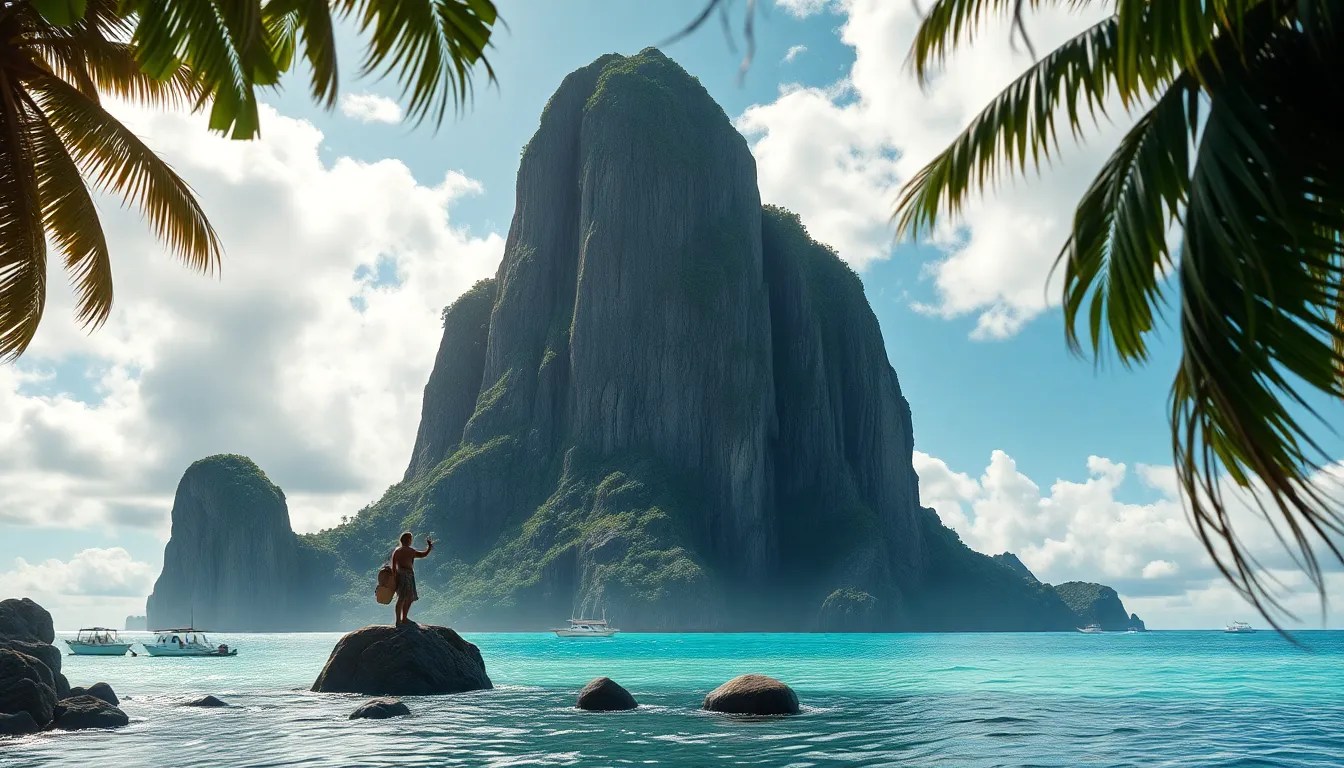Mythical Islands of Polynesia: Where Reality Meets Imagination
I. Introduction
Polynesian culture is rich and diverse, characterized by a deep connection to the ocean, land, and celestial bodies. At the heart of this culture lies an intricate tapestry of mythology, which serves as a reflection of the people’s beliefs, values, and their understanding of the world. The islands of Polynesia play a significant role in these narratives, often serving as sacred spaces imbued with spiritual meaning.
This article aims to explore the mythical islands of Polynesia, delving into their significance in cultural narratives and their impact on contemporary society. By examining these enchanting locations, we can better understand the interplay between reality and imagination in Polynesian mythology.
II. The Role of Islands in Polynesian Mythology
In Polynesian mythology, islands are not merely geographical locations; they are sacred spaces that embody spiritual significance. The very act of voyaging between these islands is steeped in mythological importance, reflecting the connection between the physical world and the spiritual realm.
- Symbolism of Islands as Sacred Spaces: Islands are often viewed as sacred entities, representing both physical and spiritual realms. They are places where the earthly and divine meet, and many myths emphasize their sanctity.
- Islands as Homes of Gods and Ancestral Spirits: Numerous deities and ancestral spirits are associated with specific islands, believed to reside there and influence the lives of the inhabitants.
- Connection Between Geography and Mythological Narratives: The geography of the islands shapes the stories told about them, with natural features often serving as the backdrop for legendary events.
III. Notable Mythical Islands in Polynesian Lore
Polynesian mythology is replete with notable mythical islands, each with its own unique stories and significance. Some of the most prominent include:
- Hawaiki: Considered the ancestral homeland of many Polynesian peoples, Hawaiki is a mythical island that symbolizes the origins of the Polynesian migration across the Pacific Ocean.
- Rarohenga: In Maori mythology, Rarohenga is the underworld realm, a place where spirits journey after death. This island represents the cycle of life and death in Polynesian beliefs.
- Aotearoa: Often referred to as the “land of the long white cloud,” Aotearoa is rich in mythology, particularly among the Maori people, who see it as a sacred land filled with ancestral significance.
IV. Creation Myths and the Birth of Islands
Creation myths play a vital role in Polynesian culture, explaining how the islands came to be and the divine forces behind their formation. These stories often feature deities who shape the islands through their actions.
- Stories of Island Creation: Many Polynesian cultures share similar creation myths, often involving the earth, sky, and ocean. For example, in Hawaiian mythology, the goddess Pele is credited with creating the Hawaiian Islands through her volcanic activity.
- The Role of Deities in Shaping the Islands: Deities such as Tangaroa (god of the sea) and Tane (god of forests) are integral to the creation stories, illustrating the interconnectedness of nature and spirituality.
- Examples from Different Cultures:
- Hawaiian: The story of Pele and her volcanic eruptions is central to Hawaiian identity.
- Maori: The story of Ranginui (Sky Father) and Papatuanuku (Earth Mother) depicts the separation of sky and earth, leading to the formation of land.
- Tahitian: Tahitian myths often recount the creation of land through the actions of deities, reflecting the beauty and spirituality of the islands.
V. Legends of Lost Islands and Underwater Realms
Polynesian mythology also encompasses tales of lost islands and underwater realms, capturing the imagination of generations. These legends often reflect the mysteries of the ocean and the unknown.
- The Myth of the Lost Island of Mu: Mu is said to be a great civilization that existed in the Pacific and then sank beneath the waves. This legend symbolizes the fragility of existence and the power of nature.
- Tales of Underwater Cities: Many cultures speak of underwater cities inhabited by spirits or ancestral beings, suggesting a complex relationship between land and sea.
- Cultural Interpretations: These submerged islands often represent lost knowledge or wisdom, serving as cautionary tales about the consequences of human actions.
VI. The Intersection of Myth and Reality
The myths of Polynesian islands have not only shaped cultural beliefs but also influenced historical expeditions and modern tourism.
- Historical Expeditions: Explorers such as Captain Cook were driven by the allure of mythical islands, leading to significant discoveries that bridged myth and reality.
- Influence on Modern Tourism: Many islands are marketed as mythical destinations, drawing visitors who seek to experience the enchantment of these stories firsthand.
- Cultural Preservation: Contemporary Polynesia actively preserves its myths, ensuring that the stories continue to resonate with future generations.
VII. The Legacy of Polynesian Mythical Islands
The legacy of mythical islands is profound, influencing contemporary Polynesian identity and cultural expressions.
- Shaping Contemporary Identity: Myths inform cultural practices, values, and social structures, grounding modern Polynesians in their ancestral heritage.
- Impact on Art, Literature, and Popular Culture: Polynesian mythology inspires various forms of artistic expression, from traditional crafts to modern literature and film.
- Importance of Storytelling: Storytelling remains a vital tradition, helping to keep the rich tapestry of myths alive in the hearts of the people.
VIII. Conclusion
The relationship between mythical islands and Polynesian culture is a captivating blend of reality and imagination. These islands serve as sacred symbols, embodying the spiritual depth of Polynesian beliefs and the beauty of their narratives. As we explore these enchanting tales, we are reminded of the importance of mythology in shaping identity and preserving cultural heritage.
We encourage readers to further explore the rich world of Polynesian mythology, where the lines between reality and imagination blur, revealing the profound connections that bind us to our histories and our environments.



